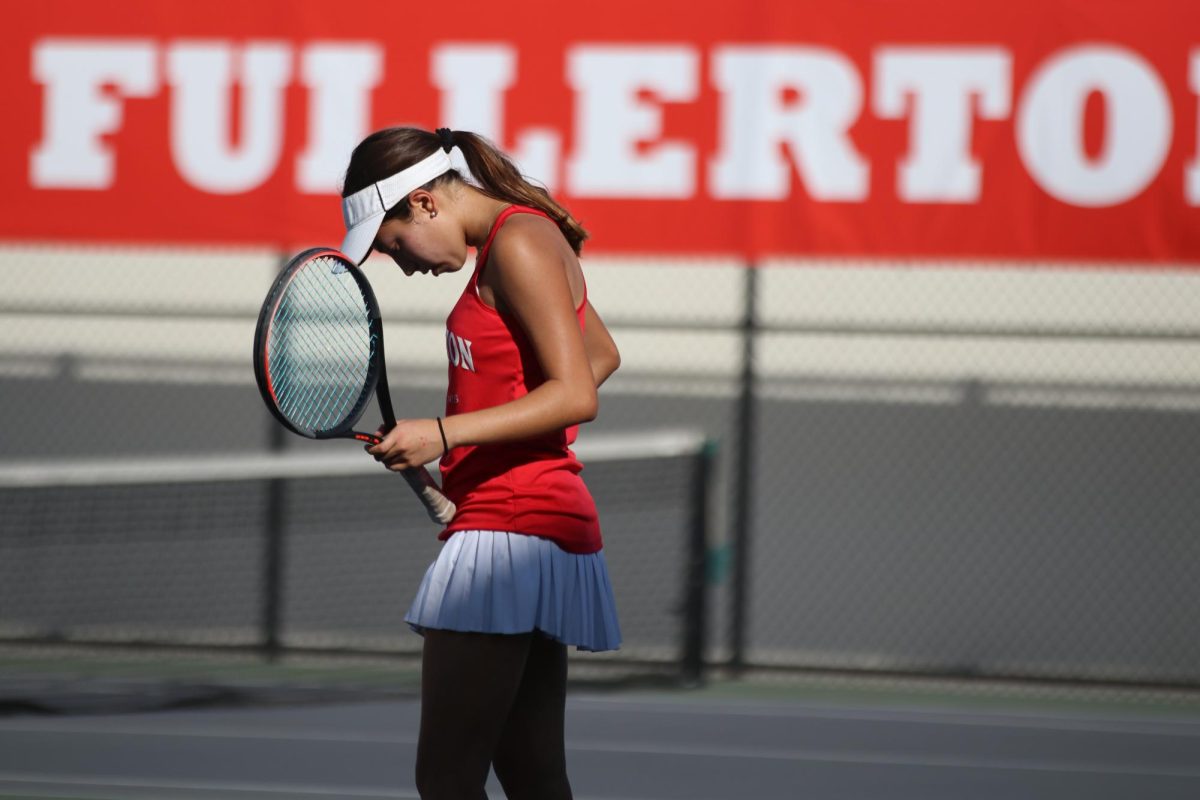Tennis is to sport as chemistry is to science. Both are fundamental in their fields.
Tennis represents agility, strategy, and skill in sports. Chemistry stands as a cornerstone in scientific study. Understanding these parallels helps us appreciate their importance. Tennis demands physical prowess, mental toughness, and precision. Similarly, chemistry requires analytical thinking, experimentation, and accuracy.
Just as tennis players master techniques, chemists develop theories and conduct experiments. Both disciplines push boundaries and drive progress. By comparing tennis and chemistry, we see how each contributes to its domain. This comparison sheds light on their roles, highlighting the dedication and expertise needed to excel. Whether on the court or in the lab, excellence in tennis and chemistry comes from passion and hard work.

Credit: depauliaonline.com
Tennis And Its Fundamentals
Tennis is a captivating sport enjoyed by millions worldwide. It’s not just a game; it’s a blend of physical skill, mental strategy, and sheer determination. Whether you are a beginner or a seasoned player, understanding the fundamentals is essential. Let’s dive into the basics of tennis and explore its rich history, rules, and techniques.
Brief History
Tennis dates back to the late 19th century. Originating in England, it quickly gained popularity. The first Wimbledon tournament was held in 1877. This marked the beginning of its global journey. Over the years, tennis has evolved. Today, it is played on various surfaces, including grass, clay, and hard courts. The sport has produced legendary players like Roger Federer and Serena Williams.
Basic Rules And Techniques
The rules of tennis are simple yet strategic. A match can be played between two players (singles) or four players (doubles). The primary goal is to hit the ball over the net into the opponent’s court. The ball must land within the boundaries. If it doesn’t, the opponent scores a point. Matches are divided into sets, and players must win six games to win a set. Typically, a match is best of three or five sets.
Techniques are crucial in tennis. The grip, stance, and swing are fundamental. Players use different grips like the continental, eastern, and western grips. Each grip offers unique advantages. Stance varies between open and closed, depending on the shot. A good swing involves a smooth follow-through. Serving is also vital. A powerful serve can give an immediate advantage. Mastering these techniques takes practice and patience.
Chemistry And Its Core Concepts
Chemistry plays a vital role in understanding the world around us. It explains the properties and behavior of matter. From the air we breathe to the food we eat, chemistry is everywhere. This section delves into the core concepts of chemistry.
Brief History
Chemistry’s roots trace back to ancient civilizations. Alchemists sought to transform base metals into gold. They also aimed to discover the elixir of life. Although their goals were mystical, they laid the groundwork for modern chemistry. The 17th century saw the rise of scientific methods. Robert Boyle, often called the father of chemistry, introduced the idea of elements. Later, Antoine Lavoisier defined chemical reactions and the conservation of mass.
Fundamental Principles
Chemistry revolves around atoms and molecules. Atoms are the smallest units of matter. They consist of protons, neutrons, and electrons. Elements are pure substances made of one type of atom. Compounds are formed by the combination of different elements. Chemical reactions involve the breaking and forming of bonds. The law of conservation of mass states that mass is neither created nor destroyed. This principle is key to understanding chemical equations.
The periodic table organizes elements by their properties. Each element has a unique atomic number. Groups and periods show patterns in element behavior. Understanding these patterns helps predict chemical reactions. Bonding is another core concept. There are three main types: ionic, covalent, and metallic. Each type affects the properties of compounds differently.
Skill Development In Tennis
Learning tennis is like a journey. It demands both physical and mental skills. Each skill set plays a crucial role in becoming a better player. Let’s explore the two key areas of skill development in tennis.
Physical Training
Physical training is the foundation of tennis. It involves various exercises to improve strength, speed, and agility.
- Strength Training: Helps in hitting powerful shots.
- Speed Drills: Enhances quick movement on the court.
- Agility Exercises: Improves the ability to change direction swiftly.
Physical training also includes endurance workouts. These workouts help players maintain energy throughout the match. Regular practice of these exercises boosts overall performance.
Mental Preparation
Mental preparation is just as important as physical training. It helps players stay focused and calm during the match.
- Visualization: Players imagine winning shots and successful matches.
- Concentration: Helps in focusing on each point without getting distracted.
- Stress Management: Techniques like deep breathing keep nerves in check.
Developing a strong mental game can make a significant difference. It allows players to handle pressure and stay positive, even during tough matches.
Combining physical training with mental preparation creates a well-rounded tennis player. Both aspects are essential for achieving success on the court.

Credit: www.columbiamissourian.com
Skill Mastery In Chemistry
Skill mastery in chemistry involves understanding both practical and theoretical aspects. Just as athletes refine their skills, chemists hone their techniques. This includes precise laboratory methods and deep theoretical knowledge. Both are vital for success in the field.
Laboratory Techniques
Laboratory techniques form the backbone of practical chemistry. Handling chemicals safely is crucial. Accurate measurements ensure reliable results. Preparing solutions requires precision. These skills prevent errors in experiments. Proper use of equipment is also essential. Each tool has a specific purpose. Knowing how to use them increases efficiency. For example, pipettes measure small liquid volumes. Balances weigh substances accurately. Mastering these tools enhances a chemist’s effectiveness.
Theoretical Understanding
Theoretical understanding complements practical skills in chemistry. Concepts like chemical bonding explain how substances interact. Thermodynamics explores energy changes in reactions. These theories guide experimental design. They also help predict outcomes. Understanding molecular structures aids in creating new compounds. Equations and formulas simplify complex processes. They provide a framework for problem-solving. A solid grasp of theory ensures accurate interpretations. This knowledge is fundamental for scientific advancement.
Comparing Learning Curves
Learning a new skill can be compared to climbing a mountain. Both tennis and chemistry present unique learning curves. They require dedication, practice, and the ability to overcome challenges. Let’s explore the learning curves by comparing practice and persistence as well as challenges and milestones.
Practice And Persistence
Tennis demands regular practice. Players need to develop muscle memory through repetitive actions. Serving, volleying, and backhand strokes all need continuous refinement. Consistent practice leads to better performance. Persistence is key. Without it, progress stalls.
Chemistry, on the other hand, requires a different kind of practice. Students must familiarize themselves with the periodic table, chemical bonds, and reactions. Repeatedly solving equations and conducting experiments helps solidify knowledge. Persistence in studying complex topics ensures a deeper understanding over time.
Challenges And Milestones
In tennis, challenges come in the form of physical and mental barriers. Players face tough opponents, injuries, and the pressure of competitions. Key milestones might include winning a match, improving a serve speed, or mastering a new technique.
Chemistry presents intellectual challenges. Students often struggle with abstract concepts and complex equations. Milestones in chemistry include understanding a difficult concept, successfully completing a lab experiment, or passing a challenging exam.
Both fields demand patience and effort. Progress may seem slow, but each small victory builds towards greater achievements. Practice and persistence, along with overcoming challenges and celebrating milestones, are crucial in both tennis and chemistry.

Credit: tribetribune.com
Impact On Personal Growth
Tennis and chemistry both offer profound impacts on personal growth. Tennis teaches physical skills and mental strength. Chemistry develops analytical thinking and problem-solving abilities. Both disciplines help individuals grow in unique ways.
Discipline And Focus
Playing tennis demands discipline. Players must practice regularly to improve. This requires a strong commitment. The same goes for chemistry. Studying chemistry requires focus and attention to detail. Both fields teach the value of discipline.
Maintaining focus during a tennis match is crucial. A moment of distraction can change the game. In chemistry, missing a step in an experiment can lead to failure. These experiences teach the importance of staying focused.
Problem-solving Skills
Tennis players constantly solve problems. They must outthink their opponents. This builds quick thinking and adaptability. Chemistry also requires problem-solving. Chemists must understand complex reactions. They need to find solutions to scientific problems.
Both tennis and chemistry develop critical thinking. They teach how to approach challenges. These skills are valuable in all areas of life. Personal growth comes from facing and solving problems. Tennis and chemistry provide these opportunities.
Frequently Asked Questions
What Is The Relationship Between Tennis And Sport?
Tennis is a popular sport that involves strategy, skill, and physical endurance. It’s a competitive and recreational activity enjoyed worldwide.
How Does Chemistry Relate To Science?
Chemistry is a branch of science that studies the properties, composition, and behavior of matter. It helps us understand the world at a molecular level.
Why Is Chemistry Important In Daily Life?
Chemistry explains the properties of substances we use daily, like cleaning agents and medicines. It impacts health, environment, and technology.
How Do Tennis And Chemistry Require Practice?
Both tennis and chemistry require practice to master. Tennis needs physical training, while chemistry requires understanding concepts and conducting experiments.
Conclusion
Tennis and chemistry both require skill and precision. Each demands practice and dedication. Both fields offer challenges and rewards. Tennis improves physical health. Chemistry expands our knowledge. Mastering either can be fulfilling. Both teach patience and discipline. They shape our minds and bodies.
Tennis is to sport as chemistry is to science. Each has its unique appeal. Both enrich our lives in different ways. Try playing tennis or studying chemistry. You might find a new passion.



